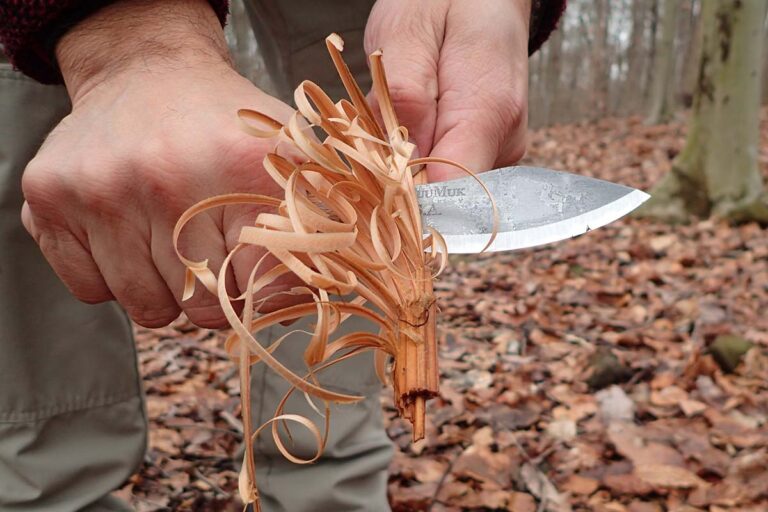
History repeats itself in modern renditions of an all-American classic.
Some patterns stand the test of time and become legendary for a reason, be it a story, movie or book. The Nessmuk-style knife stands out because of its shape.
Nessmuk was the pen name of George Washington Sears, a 19th-century American writer, conservationist and outdoorsman. He wrote about his wilderness adventures, particularly his solo canoe trips in the Adirondacks, a picturesque mountain range in northeastern New York state. He promoted a simple and lightweight approach to camping and woodcraft.
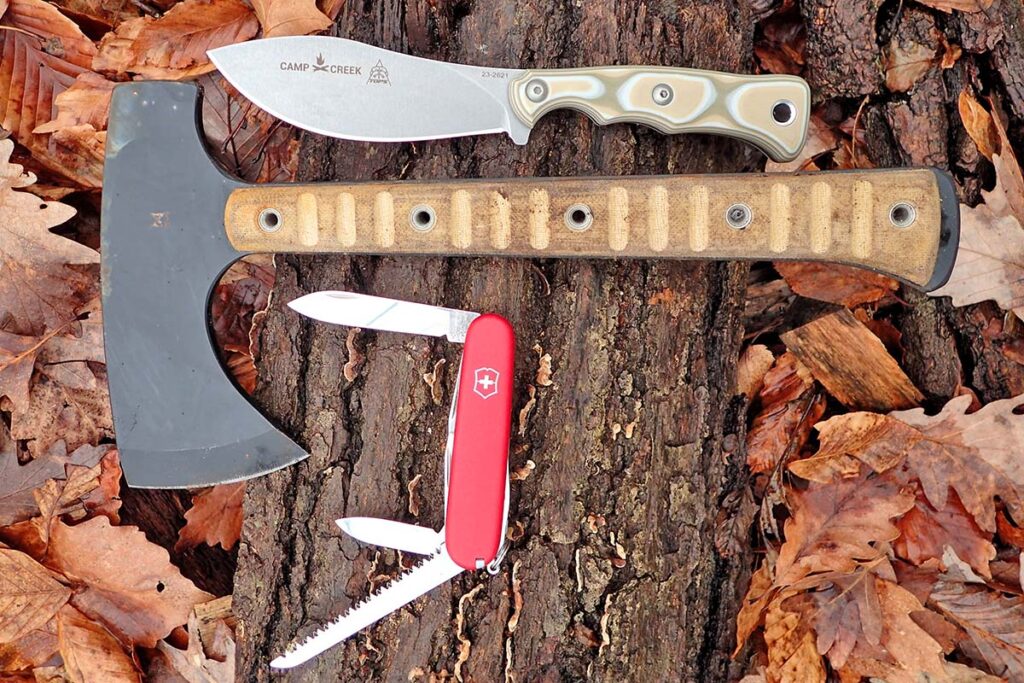
According to the story, the Nessmuk knife was named after a childhood friend of Sears’s from the American Indian community. The knife was not well documented and very little is known about it except for a diagram in Sears’s book Woodcraft and Camping. The book describes the knife as “thin in the blade, and handy for skinning, cutting meat, or eating with.”
What Is A Nessmuk
The Nessmuk-style knife has a unique shape that sets it apart from other models. The 4-to-5-inch blade has a hump on the spine that is closer to the point. The blade also has a deep belly and an upswept point, which makes it ideal for slicing, skinning and similar tasks. The distinct blade shape is the defining feature of a Nessmuk-style knife.
George Washington Sears, aka Nessmuk, preferred thin knives with keen edges. He paired his knife with a double-bit hatchet and a folding knife, forming his “trinity” of cutting tools.

Usually, a Nessmuk blade is carbon steel ranging from 3/32 to 1/8 inch at the thickest. The handle comes in a variety of materials, including wood, bone or antler depending on availability and user preference. It is important for the handle to be comfortable and ergonomic, fitting the hand well.
What Makes A Good Nessmuk
A Nessmuk knife is a fixed blade Sears designed and used for his expeditions. It has a distinctive curved blade that resembles a skinner or a butcher knife and a handle that fits comfortably in the hand.
A quality Nessmuk knife should be able to perform various tasks in the woods, such as skinning game, slicing meat, carving wood, making feather sticks, cutting cord—even shaving. It should be sharp, sturdy, well balanced and easy to maintain. A Nessmuk knife should also be lightweight and compact so as not to add much bulk or weight.
TOPS Knives Camp Creek
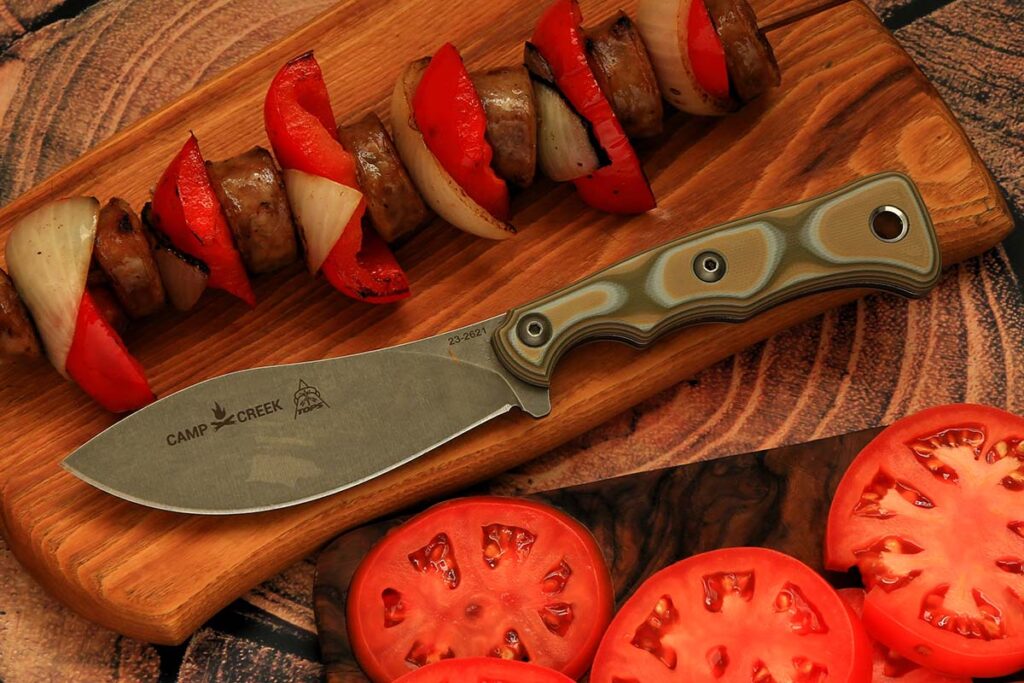
The TOPS Knives Camp Creek is a hunting/camping knife designed by Leo Espinoza, company president. The blade is CPM S35VN steel, which boasts superior edge retention and stainless properties. The handle is a three-color camo-style G-10.
The Nessmuk-like design is perfect for hunting, skinning, processing wood and food prep around the campsite. The knife has a contemporary tan Kydex sheath and a brown leather dangler on a swivel.
Camp-style kabobs were my focus with the Camp Creek due to its classic butcher knife shape. I knew it would excel slicing meat and veggies and it didn’t disappoint. It aced the tomato-slicing test and will see more dirt time in the future.
Definitely the most Nessmuk shaped of the review knives, the super-sharp, flat-ground blade has all the right curves and excels at food prep and woodcraft.
Camp Creek Specs
Designer: Leo Espinoza
Blade Length: 4.38”
Blade Steel: CPM S35VN stainless
Blade Grind: Flat
Blade @ Thickest: .13”
Blade Finish: Tumble
Handle Material: Camo G-10
Overall Length: 9”
Sheath: Coyote tan Kydex and leather
Country of origin: USA
MSRP: $305
Bear Forest Knives PuuMuk
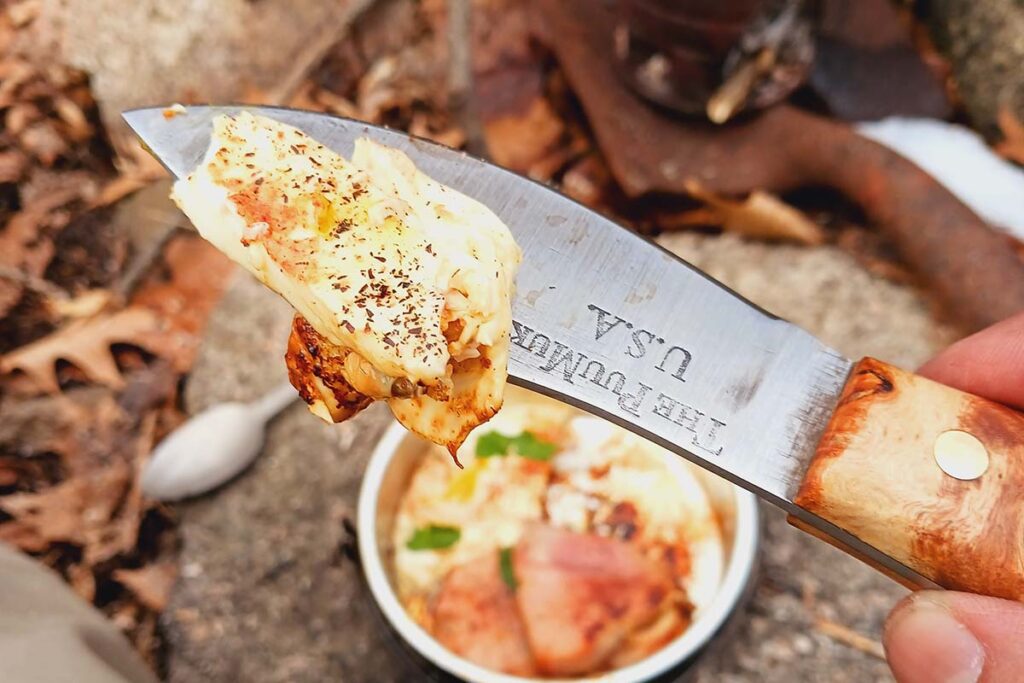
Made by Bear Forest Knives (BFK), the PuuMuk combines the design elements of a puukko and a Nessmuk-style knife. It has a straight handle without a guard and a choice of blade grinds: high saber or Scandi. The knife features full-tang construction. The blade was sharp as can be, especially the Scandi version.
The handle is like all the knives I have used from BFK—comfort is not compromised in any way. The red oak scales are secure and comfortable in any grip.
I used the PuuMuk as I would a general camp knife. I improvised carving a fork out of wood and general woodcraft like making feather sticks for a fire. The PuuMuk prepared food outdoors, slicing bacon, tomatoes, avocados and peppers. I used it as an impromptu spoon to eat off the back of the Nessmuk blade hump; perhaps Sears did the same. I used the PuuMuk for one month straight in the kitchen, doing all a kitchen knife would typically do. It didn’t take much time before the steel took on a respectable patina, adding to the look of the old-timey pattern.
The knife’s standout feature is the thin Scandi-ground blade and sharp 90-degree spine, adding a modern improvement to the classic pattern.
PuuMuk Specs
Blade Length: 3.75”
Blade Material: 80CrV2 carbon steel
Blade Grinds: Scandi and high saber options
Blade @ Thickest: 3/32”
Blade Finish: Acid wash
Knife to know: The blade’s 90-degree spine accommodates ferro rod striking and tinder scraping
Handle Material: Red oak
Overall Length: 8.375”
Sheath: JRE Industries brown leather
Country of origin: USA
MSRP: $179.99
KA-BAR Becker BK-19

The KA-BAR Becker BK-19 is a solid tool battened down with stainless steel Torx hardware and comes with a MOLLE-compatible, bulletproof Celcon sheath. Designed by Ethan Becker of Becker Knife & Tool, the 9.6-ounce edged tool stands out with the beloved Nessmuk blade shape so highly regarded in the bushcraft community.
The blade has more of a drop-point look than the other three test models. It is a survival Nessmuk if ever there was one. I put the knife into the deep end, splitting wood via a stout baton and crafting a figure-four deadfall trap. The robust blade easily split timber and processed wood for a late winter fire.
The handle was comfortable in several grips, and the exposed tang pommel added another degree of usefulness among the bunch, standing out as the hard-use survival Nessmuk the likes of which Mr. Sears would be proud.
The standout feature of this compact powerhouse is the sheath, which can be worn on a belt or in a scout carry orientation. The belt loop webbing is removable, and the retention is so good that the snap closure at the top is unnecessary. However, the closure can come in handy when in transit. KA-BAR has figured it out for you with two drain holes to help keep the sheathed blade dry in wet conditions.
BK-19 Specs
Designer: Ethan Becker
Blade Length: 4.3125”
Blade Material: 1095 Cro-Van carbon steel
Blade Grind: Flat
Blade @ Thickest: .165”
Blade Finish: Burnt bronze
Handle Material: Ultramid synthetic
Overall Length: 9.125”
Sheath: Celcon
Country of origin: USA
MSRP: $165.38
Camptoku Knives By Nuge
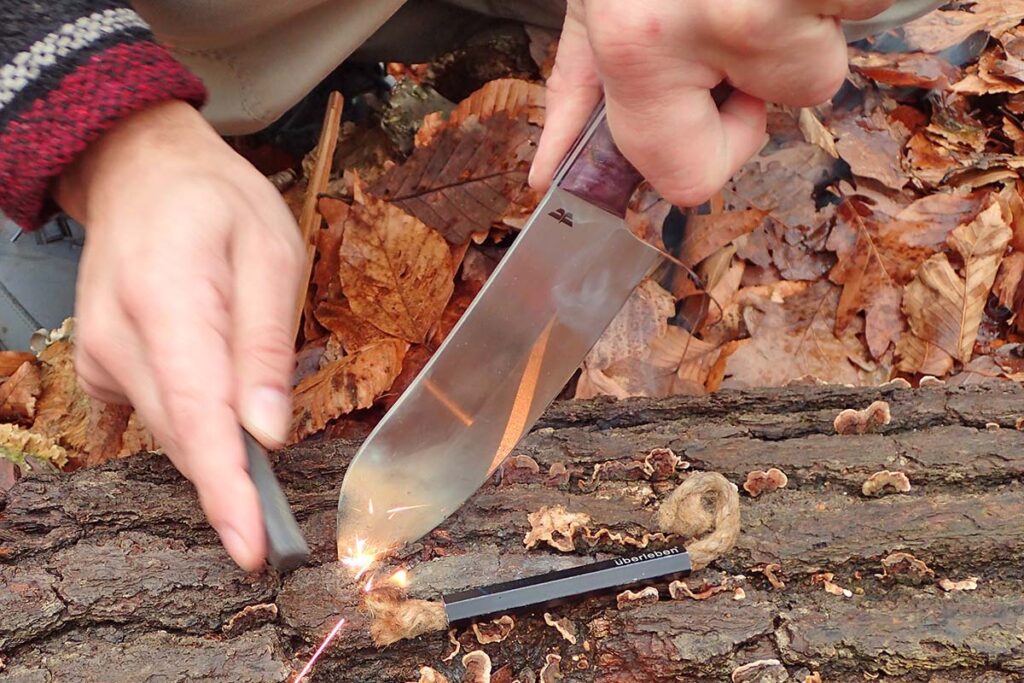
The Camptoku from Knives By Nuge is a versatile general-purpose camp knife blending the esteemed Nessmuk blade with a santoku pattern, resulting in a rugged tool for outdoor and meal tasks. The Nitro-V stainless steel blade offers excellent durability and easy maintenance. The Camptoku comes with G-10 or wood scales and a custom-made slip sheath (no belt loop).
It is the longest of the bunch and a bit of a divergence from the traditional Nessy. However, it pays homage to the revered design and moves it into a new era. The thin blade screams kitchen use and allows for a comfortable chef’s pinch grip with a rounded spine for comfort. Meanwhile, the front 1.5-inch section from the Nessmuk hump to the tip has a sharp 90-degree spine for striking a ferro rod or scraping tinder.
The handle is a generous 4.75 inches, making it suitable for kitchen and woodcraft grips. Incredibly comfortable in a fist handhold, the knife is a chameleon when put into service in a chest-lever or pinch grip. The G-10 liners and pins offer that dash of undeniable modern class.
In the field the Camptoku served as the ordained kitchen knife, slicing tomatoes, meat and vegetables for stew while also starting fires to cook what it had been used to prepare.
Camptoku Specs
Blade Length: 5.5”
Blade Steel: Nitro-V stainless
Blade Grind: Saber
Blade @ Thickest: 3/32”
Blade Finish: Satin
Knife to know: The blade has a 90-degree spine in a 1.5” section from the hump to the tip for ferro rod striking and tinder scraping
Handle Material: Choice of G-10 or maple burl
Overall Length: 10.5”
Sheath: Kydex
Country of origin: USA
MSRP: $425
Dime Novel Knives?
George Washington “Nessmuk” Sears spoke ill of the bowie- and hunting-style knives of his era (mid-to-late 19th century), writing of them, “The ‘bowies’ and ‘hunting knives’ usually kept on sale are thick, clumsy affairs, with a sort of ridge along the middle of the blade, murderous-looking, but of little use; rather fitted to adorn a dime novel or the belt of ‘Billy the Kid’ than the outfit of the hunter.”
Here To Stay
The Nessmuk knife is a versatile and practical tool that can easily handle various outdoor tasks. The pattern has become crucial to American cutlery history and shows no signs of going away. Here’s hoping it never does.
Check Out More Outdoor Knives:
- BEST TOMAHAWKS: OUR TOP HAWKS FOR BACKWOODS TO BATTLEFIELDS
- BEST BUSHCRAFT KNIFE: WHEN STEEL MEETS THE WOODS
- BEST EDC FIXED BLADE KNIFE: A CUT ABOVE THE REST
- BEST CAMP KNIVES: OUTDOORS DO-ALLS
 NEXT STEP: Download Your Free KNIFE GUIDE Issue of BLADE Magazine
NEXT STEP: Download Your Free KNIFE GUIDE Issue of BLADE Magazine
BLADE’s annual Knife Guide Issue features the newest knives and sharpeners, plus knife and axe reviews, knife sheaths, kit knives and a Knife Industry Directory.Get your FREE digital PDF instant download of the annual Knife Guide. No, really! We will email it to you right now when you subscribe to the BLADE email newsletter.






